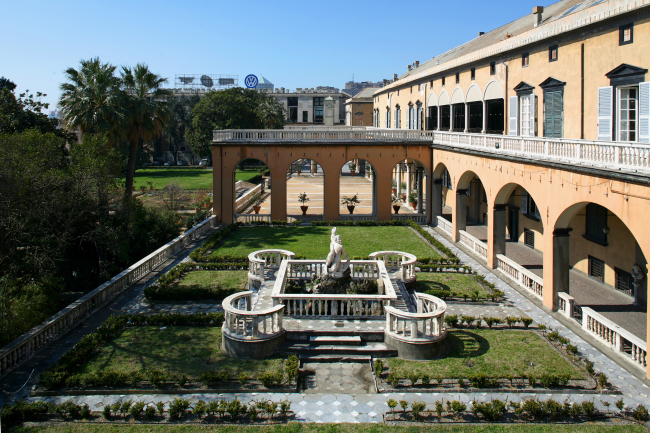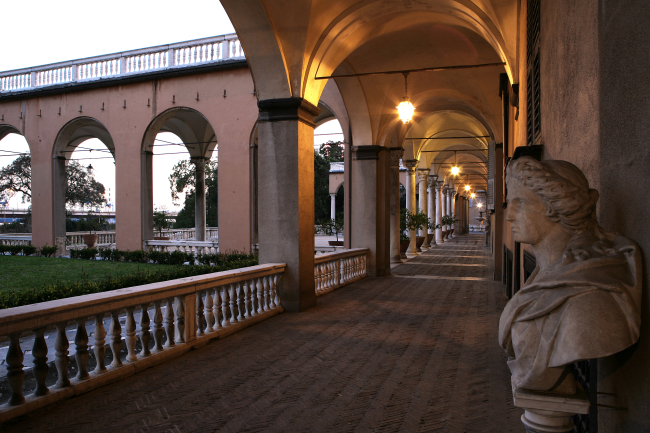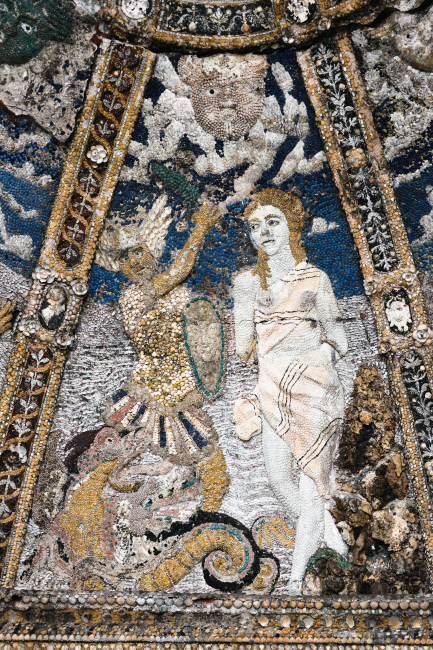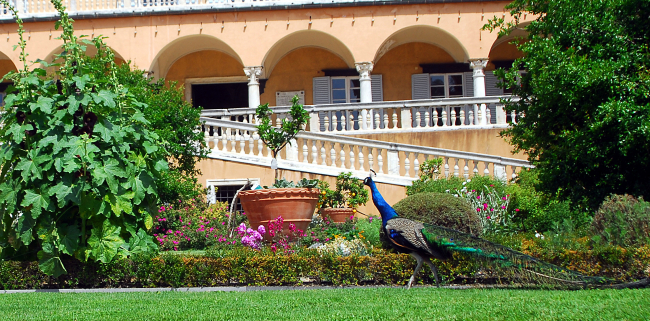Garden of the Villa del Principe Doria
The Garden of the Villa del Principe, the Genoese residence that belonged to the famous Doria Pamphili family, is more than just a complement to the beauty of the sumptuous residence: it is also an integral part of the history of Genoa.
Prince Andrea Doria crossed it to reach the Villa on his return from his battles at sea; aromas and flowers of every sort, pergolas, fountains, statues and shady colonnades welcomed him home. Feasts, games and stately performances were once held here in honour of important guests. Over the centuries, the garden of the Villa del Principe has undergone several changes, remaining nonetheless a natural marvel and a testament to the villa’s history.
Andrea Doria endowed his residence with beautiful gardens. Perino del Vaga's work here probably owes much to the creation of the "delightful gardens" that welcomed Charles V during his stay at the Villa in 1533. The layout of the courtyard in front of the villa's southern façade belongs to this first design, divided into three areas by the perpendicular arms of the terraced portico, in keeping with the style of Hellenistic and Roman seaside villas. Still standing in the gardens from this period is the fountain "dei Delfini" (of the Dolphins). Andrea then entrusted Giovanni Angelo Montorsoli from Florence with the task of creating "new additions of beautiful creations and gardens"; the Fontana del Tritone (Fountain of the Triton) is a clear example of the sculptor's work.
It was Giovanni Andrea I who commissioned the architect Giovanni Ponzello to carry out the project that was to give the historic complex its definitive shape. At the end of the 16th century, the garden towards the sea emerged as an extensive area divided into geometric shapes, centred around the Fontana del Nettuno (Fountain of Neptune). Visitors to the garden were especially struck by the large aviary, which housed thousands of birds in an ornate iron 100 m-long structure, and a mosaic-lined grotto that exists to this day, albeit completely detached from its original context.
In the 1850s, Prince Filippo Andrea V transformed the sea garden into a small "English" park in the romantic style, erasing all signs of the pre-existing symmetrical axes in favour of winding paths and small copses. During the Second World War, bombings inflicted massive damage, and the recent restoration work (beginning with the central area, completed between 1998 and 2000) is aimed at recreating the garden’s late-16th-century layout, more extensively documented than the earlier layout and consistent with the architecture of the villa. Historical accuracy is also the key criterion applied to the selection of the plants, with the aim of recreating the horticultural arrangements of the period, so priority has been given to plants and combinations typical of the time, such the pairing of flower species with herbs (roses with myrtle, rosemary with carnations, etc.), and the inclusion of species imported from the New World in the 16th century.
Useful info








